The musical octopus holds his consideration simply lengthy sufficient to get the job executed. The diaper is modified. In my child’s first yr, I’ve executed this greater than 2,500 instances. However not like many dad and mom in western, industrialized nations, I will not throw the used nappy within the trash. It will go within the washer.
Fashionable material nappies fasten with hook and loop or domes. They’re handy, cost-effective and cute.
However one thing’s been retaining me up at night time: In attempting to cut back our plastic consumption, am I sending a great deal of tiny bits of plastic into the ocean as an alternative, each time I wash them? What would an actual octopus consider my nappy wash?
Practicality and efficiency
Small fibers shed in the course of the washing of petroleum-based artificial materials can get by means of wastewater therapy vegetation and find yourself contributing to microplastic air pollution, as a result of they do not degrade.
Anastasia Michailov, a founding admin of laundry website Clear Material Nappies, has observed rising concern among the many 41,000 members of their troubleshooting Fb group.
Learn extra: Whose fault is plastic waste within the ocean?
How a lot artificial materials truly goes down the pipe when nappies are cleaned within the washer?
A part of what makes trendy material nappies work so properly, in response to Michailov, are the artificial materials utilized in them.
“Microfleece works properly for reusable liners, suede material polyesters for a stay-dry layer on inserts, polyurethane laminate for water-proof covers and shells, microfiber inserts soak up rapidly and dry fast, viscose/rayon made out of bamboo absorbs a whole lot of liquid,” she mentioned, including that pure fibers cotton and hemp are additionally generally used within the varied parts of 21st century nappies. Most individuals use a combination.
Like Michailov, I take advantage of about half synthetics, and that is fairly typical.
Learn extra: Scientists say ambiance carrying microplastics to the Arctic
The experiment
Olga Pantos opens up a small foil parcel. Inside is a disc-shaped mesh filter which clips into a stainless-steel funnel. The senior scientist at New Zealand’s Institute of Environmental Science and Analysis (ESR) has designed an experiment to see what number of microplastic fibers come off considered one of my nappy washes.
I disconnect the outlet pipe in my laundry and place a bucket beneath it to rigorously collect the 90 liters of wastewater from a full load. As I pour it, jug by jug, by means of the 300 micron filter, I can see clumps of tiny fibers accumulating. I pack it up rigorously, ship it to the lab and look ahead to the outcomes.

Utilizing a 300-micron filter, Samantha Early collects microplastics from considered one of her a great deal of reusable nappy washes
Challenges for wastewater therapy
If I observe the water from my machine, I attain the Christchurch Wastewater Remedy Plant 10 kilometers (6.2 miles) away, which serves about 385,000 individuals. Council planning engineer Mike Bourke explains that when the plant was designed, individuals did not find out about microplastics.
“They’re so small that there is actually no trendy wastewater therapy methods that can successfully take all of them out,” he advised DW, including that early evaluation has proven that every day, about 240 million microplastic particles might be being discharged from the plant into the oxidation ponds, from the place the handled water is ultimately piped out to sea.
However even filtered-out microplastics might be retained within the biosolids produced within the therapy course of and used as fertilizers.
“It’ll be very tough to destroy the microplastics, you may take them out of 1 part however they are going to find yourself in one other part, and except you are into incineration of your solids for instance, they’re more likely to stay within the atmosphere.”
Learn extra: Alarming stage of plastic in kids’s our bodies, German research reveals
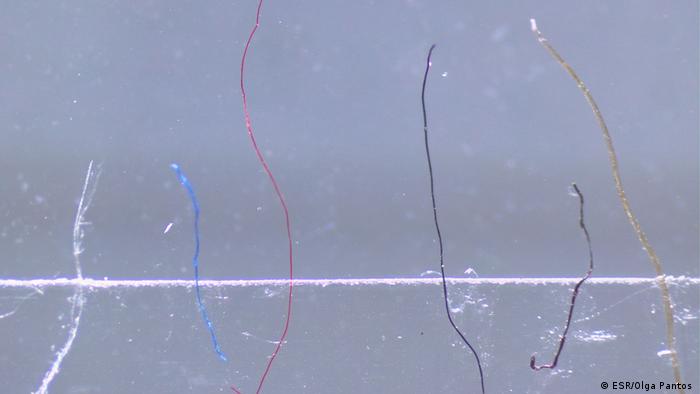
Artificial microfibers that find yourself in waterways are ingested by animals, that are then, in flip, ingested by people
Environmental results
I meet up with Pantos on the seashore. The pipe which carries the town’s wastewater three kilometers into the Pacific Ocean is true beneath our ft.
She explains that microplastics might be taken up by a variety of animals, together with filter-feeding mussels, worms dwelling within the sediments, and fish.
“They’ll have a complete vary of various impacts reminiscent of appearing as little rafts for invasive species or pathogens to journey to areas that they should not be in, (and) modifications to the microbial communities inside an atmosphere, that are actually necessary in issues like nutrient biking. Some research are discovering that plastic might be taken up by a few of the main oxygen producers in our seas.”
She says far more analysis is required into their impacts and methods to remediate the issue.
“One factor we do know, these artificial microfibers or microplastics aren’t presupposed to be within the atmosphere, so if they are not there they cannot do any hurt.”
Learn extra: Emissions and microplastics: How meals waste hurts the atmosphere
Stopping it on the supply?
Michailov says Clear Material Nappies members are always asking the best way to forestall microplastic air pollution. Many widespread suggestions,reminiscent of chilly washing to attenuate put on on materials, do not work for such heavy soiling. She’s not but seen sufficient proof to assist fiber-catching laundry balls, and laundry baggage aren’t appropriate for diapers: “If they are going to lure microfibers, they are going to lure poo.”
Including an additional filter to the machine has the next success fee, she says, however that is additionally extra of an funding.
“The very best we have been in a position to provide you with is keep away from the materials within the first place.”
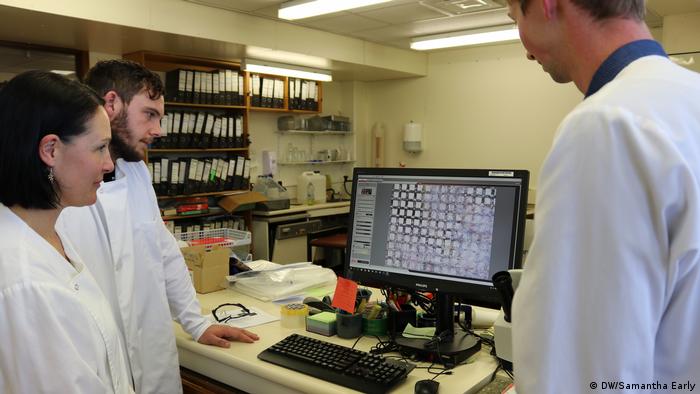
Olga Pantos and her workforce of microplastic technicians look at the fibers captured from Samantha’s nappy wash
Outcomes are in
Analyzing microplastics is a labor-intensive course of. In whole, 102.5 milligrams of fabric was captured from my wash, primarily fibers. My one pattern took hours to research, with two small sub-samples taken. Fourier rework infrared spectroscopy (FTIR) was used to establish the fibers.
“Nearly all of the fibers we discovered was the white materials which was viscose, also referred to as rayon, and the precise proportion that have been synthetics or polyester was actually, actually low,” Pantos says.
Though man-made, viscose/rayon is regenerated cellulose and regarded to be metabolisable by organisms, and subsequently wouldn’t be thought of a microplastic.
Learn extra: Plastic air pollution: Do seashore cleanups actually make a distinction?
In whole, roughly zero.5% of the fibers within the pattern have been microplastics. Pantos says it’s because the polyester outer shells might not be shedding as a lot because the absorbent inners.
“In case you are utilizing an artificial fleece liner, you then would count on to be placing extra plastics out in each wash. Fleece materials is de facto dangerous at shedding fibers within the wash,” she provides.
I am inspired by the general end result, particularly contemplating the wash was 26 modifications value.
“Relative to different clothes, it isn’t placing out that a lot,” Pantos concluded. “Only a teeny tiny piece of 1 disposable nappy would match what went by means of from the reusable nappies.”

A complete of 102.5 milligrams of fabric was filtered from a wash of 26 reusable nappies
Child steps
One factor nonetheless bothered me: the query of the place the plastic finally ends up. Is it a lesser hurt to have plastics in landfill than launch microplastics into the atmosphere? Pantos cites a New Zealand landfill which washed out in a storm this yr, spewing 1000’s of tonnes of garbage alongside the riverbed and shoreline.
“Simply since you’re placing it within the bin and it may landfill, does not imply it is gone. So by lowering what we’re utilizing, there’s much less of that potential to return again out once more into the atmosphere.”
In different phrases, lowering our total plastic use is vital, in response to Pantos.
So the place subsequent? I am going to maintain utilizing the nappies I’ve, but when I would like extra I am going to select pure fibers the place attainable. I am going to look into methods to cut back shedding for my non-nappy laundry and maintain attempting to cut back our total plastic consumption. Then, hopefully, my earth-loving conscience can be as clear as my nappies.
Or, as Anastasia Michailov from Clear Material Nappies places it:
“I determine you’ll be able to’t do every part completely, however in case you do enhance one thing, it may assist.”
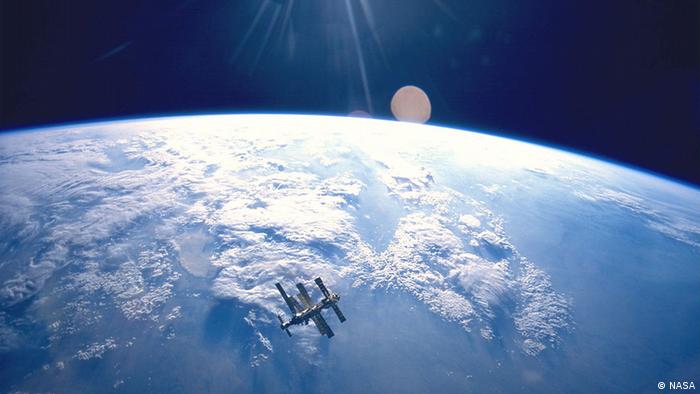
The Ocean: Earth’s life assist
Our blue planet
It isn’t known as the blue planet for nothing. The ocean covers as much as 71% of the Earth’s floor and 90% of the biosphere. It’s integral to life and supplies wherever between 50 to 80% of the planet’s oxygen, making it an important a part of the carbon cycle. The ocean’s origins are nonetheless unknown, however it’s thought to have shaped four.four billion years in the past, offering a catalyst for early life-forms.
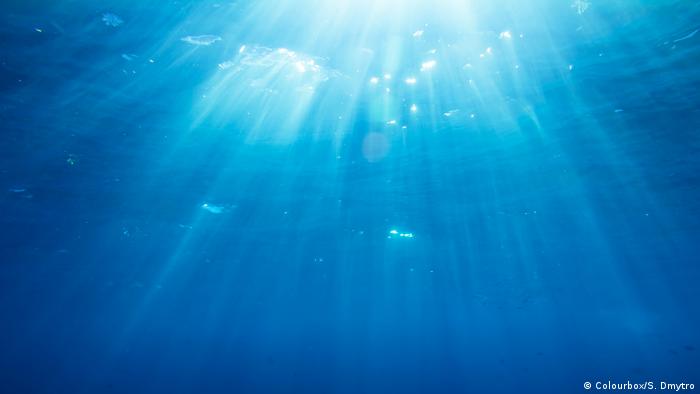
The Ocean: Earth’s life assist
Mysteries of the deep
Regardless of its sheer measurement, we truly know little or no concerning the ocean. In reality, over 80% of this underwater realm has but to be mapped or explored. Scientists are working to unlock its mysteries, which might assist us higher perceive environmental change and the best way to handle very important ocean assets in instances of local weather change.
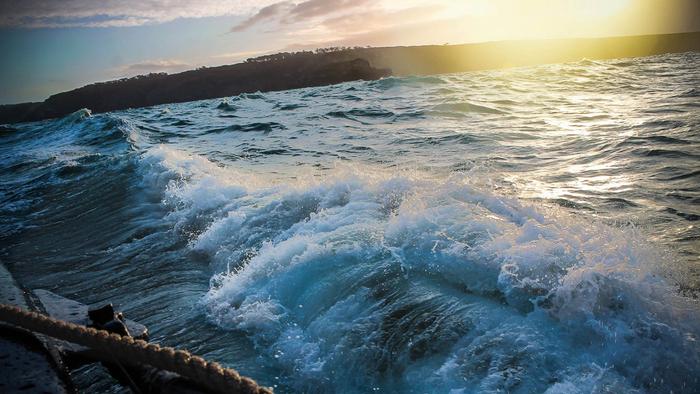
The Ocean: Earth’s life assist
The planet’s local weather regulator
We do know that the ocean performs a serious function in regulating the Earth’s local weather by absorbing photo voltaic radiation, distributing warmth and driving climate patterns. However local weather change is already beginning to disrupt this stability, affecting the ocean’s capacity to carry out key ecosystem duties, reminiscent of carbon storage and oxygen era.
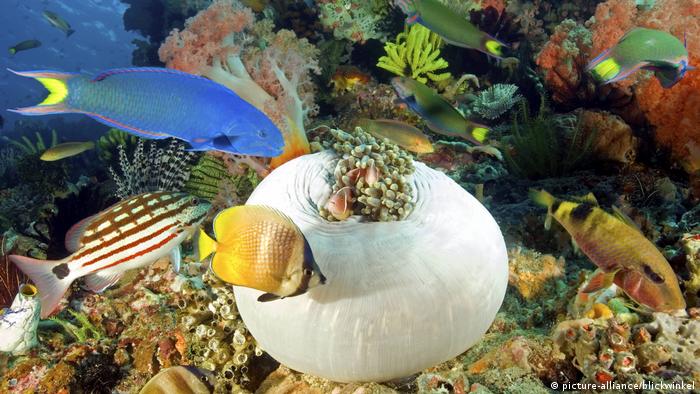
The Ocean: Earth’s life assist
Teeming with life
The ocean is dwelling to at the least 230,000 recognized species. Coral reefs on the ocean ground present a safe-haven for invertebrates like crabs, starfish and mollusks, in addition to colourful reef fish. Flowers thrives within the shallow depths, whereas larger creatures like sharks, whales and dolphins roam the deep open waters.
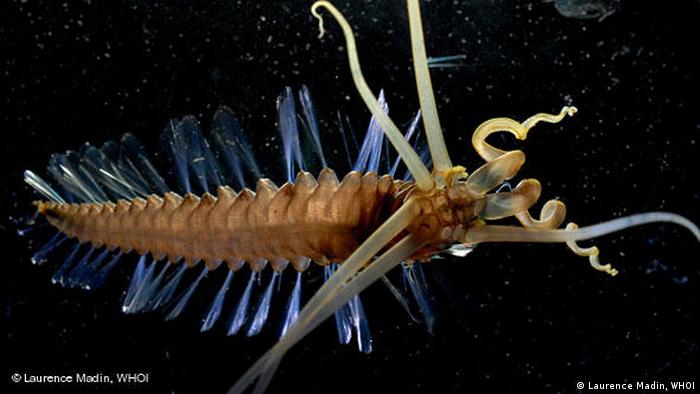
The Ocean: Earth’s life assist
Extraordinary creatures
Unsurprisingly, scientists additionally assume as much as two-thirds of all ocean species should still be undiscovered. However researchers are discovering new species yearly — lots of them not like something discovered earlier than, reminiscent of this squidworm (pictured), found within the Celebes Sea in 2007. What else is likely to be lurking down there’s anybody’s guess.

The Ocean: Earth’s life assist
Warning indicators
However the ocean is beneath stress. One of the crucial apparent examples being the rise of coral bleaching occasions in reefs all over the world. Elevated temperatures and air pollution stress corals, inflicting them to expel a particular form of algae which permits them to develop and reproduce, abandoning a ghostly skeleton. Some corals can get well, however extended stressors enhance the possibilities of reef mortality.
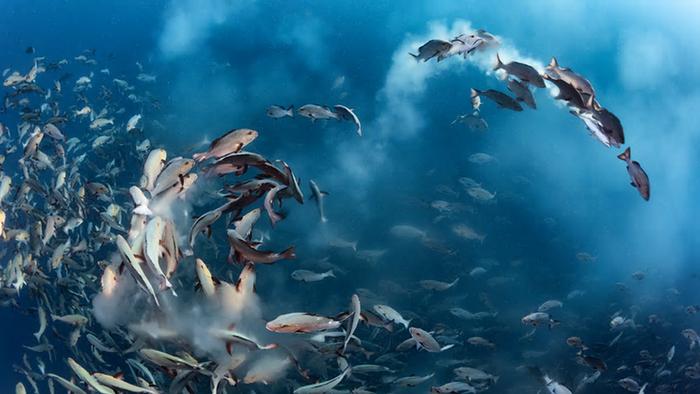
The Ocean: Earth’s life assist
No refuge
Local weather change can also be significantly impacting marine species, with current analysis exhibiting that native populations of fish, mollusks and crabs are disappearing at twice the speed of land species. Excessive temperatures are the principle perpetrator, because the ocean affords fewer locations to cover from the warmth. Sadly, the vast majority of ocean species will not be capable of evolve quick sufficient to adapt to the altering situations.
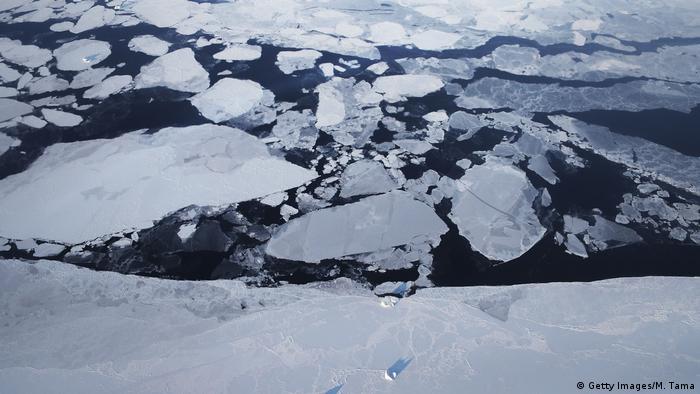
The Ocean: Earth’s life assist
The massive soften
Within the cryosphere — components of the Earth’s floor lined in strong water, together with ice and snow — atmospheric warming is inflicting the melting of glaciers and ice. The present melting occasion is already contributing to world sea stage rise and will additionally result in greater ranges of ocean acidification, because of methane launched from seafloor permafrost within the Arctic Ocean.

The Ocean: Earth’s life assist
Shedding a lifeline
People are inextricably linked to the ocean. For 1000’s of years communities have thrived alongside the coast, counting on it for meals and livelihoods. Right now, a couple of billion individuals reside in low-lying coastal areas that are more likely to be impacted by rising sea ranges.
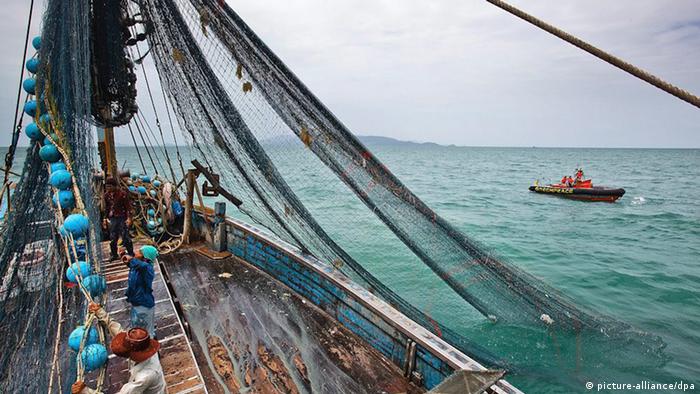
The Ocean: Earth’s life assist
Disappearing wilderness
However this connection has come at a value. Simply 13% of the world’s oceans are utterly free from human actions reminiscent of fishing, with virtually no true wilderness left alongside coastal areas. Technological developments imply even the farthest reaches of ocean within the Arctic are not untouched. Defending the remaining wilderness can be a problem for generations to return.



















